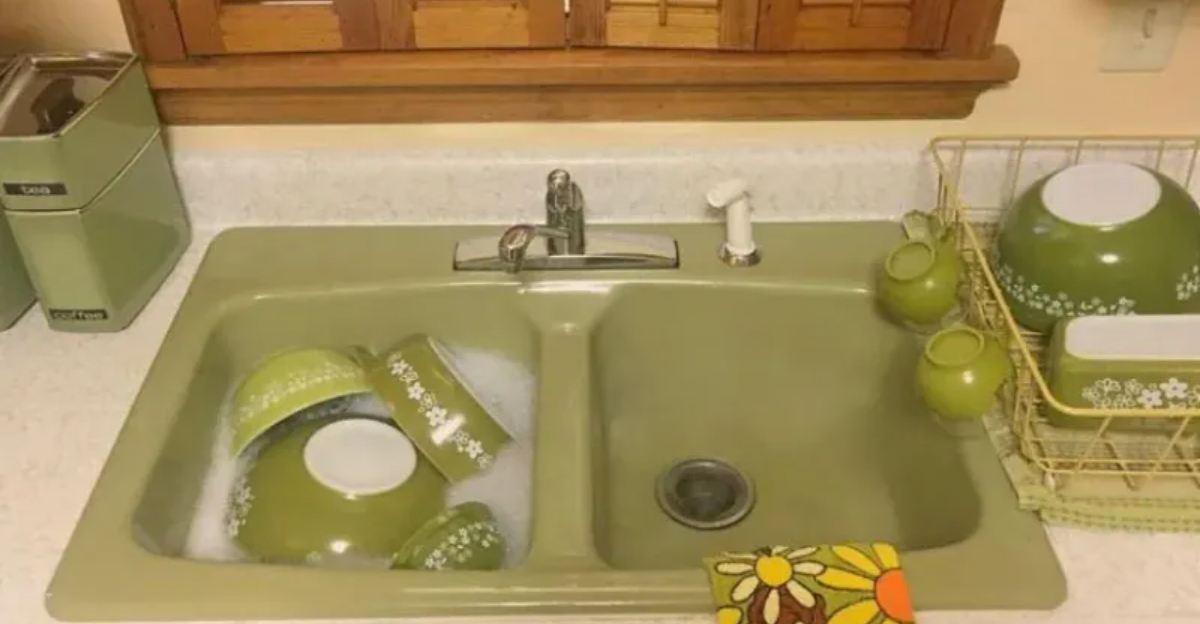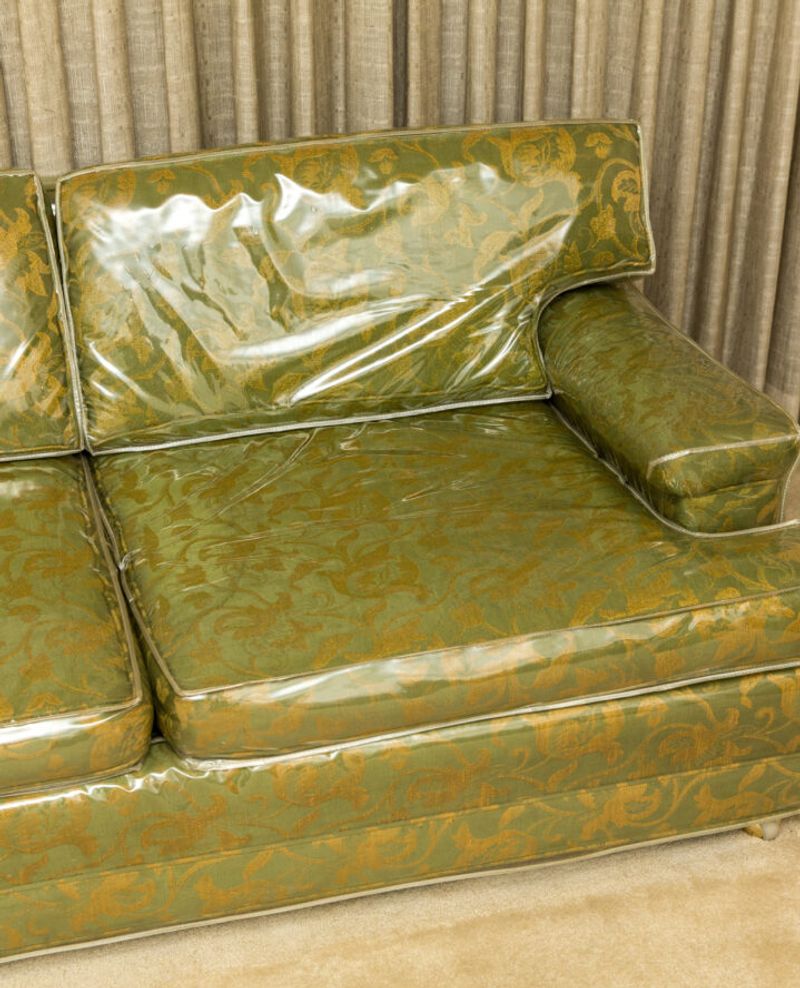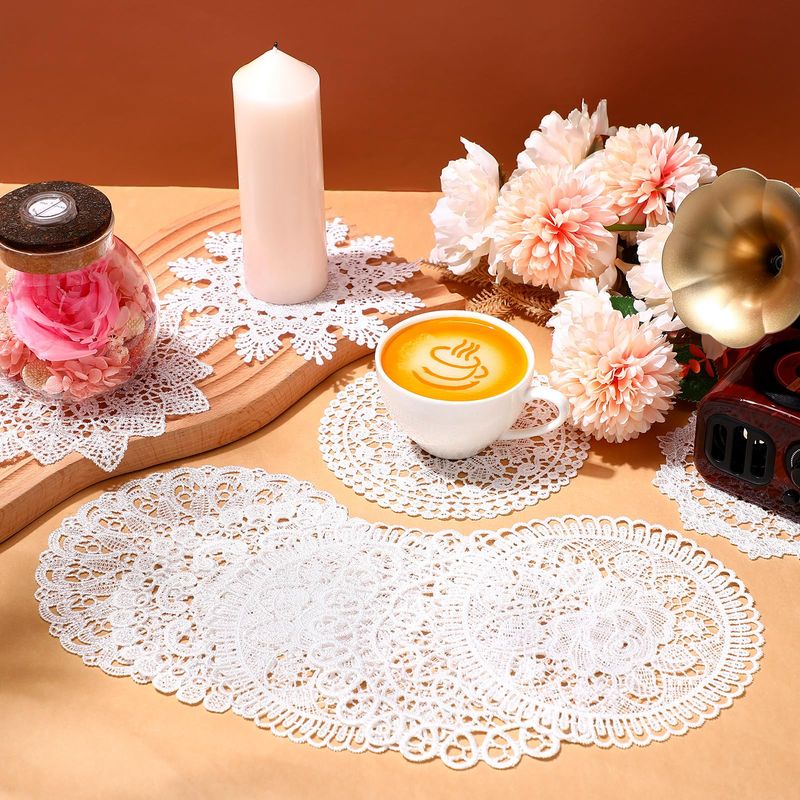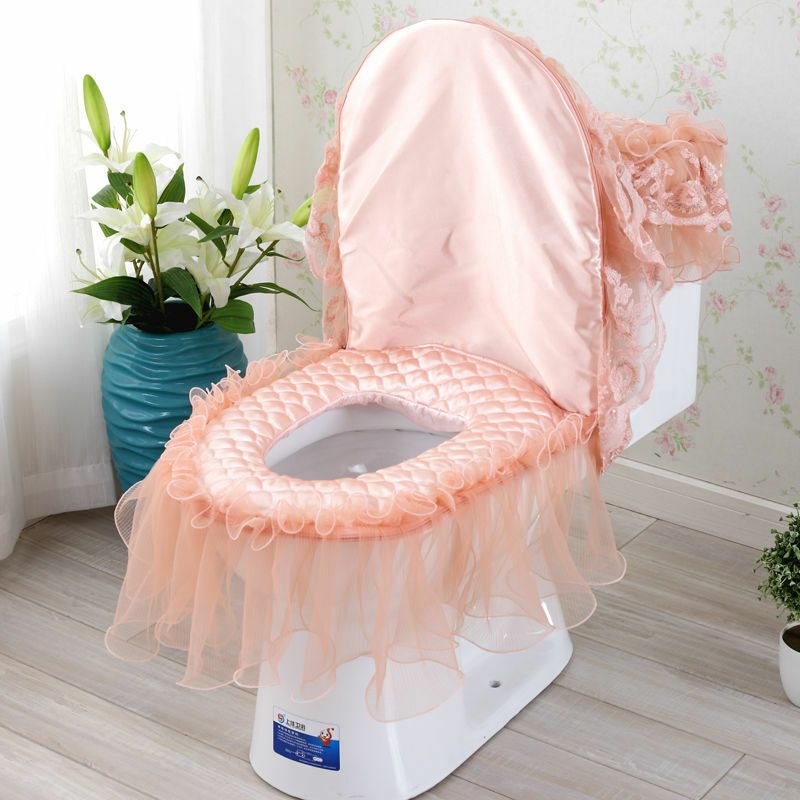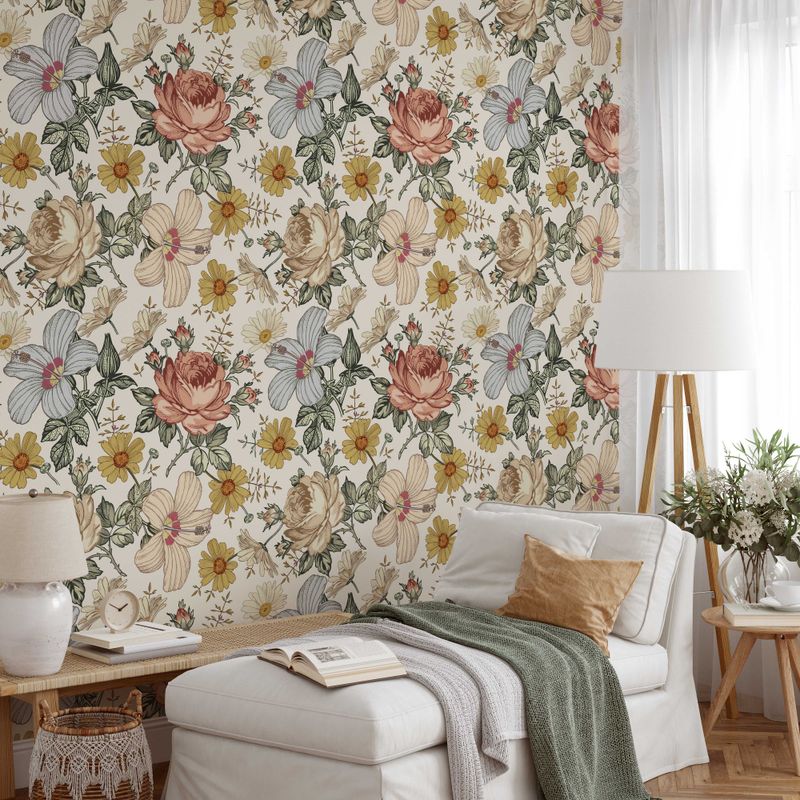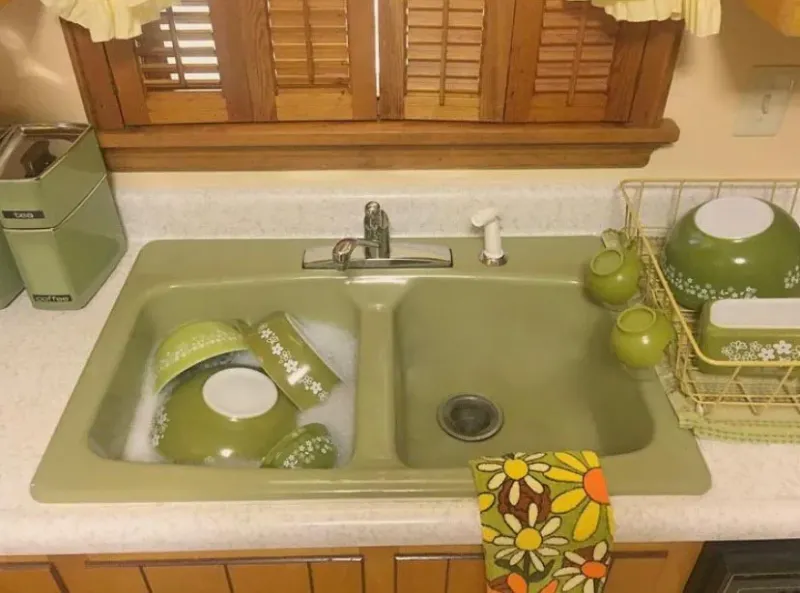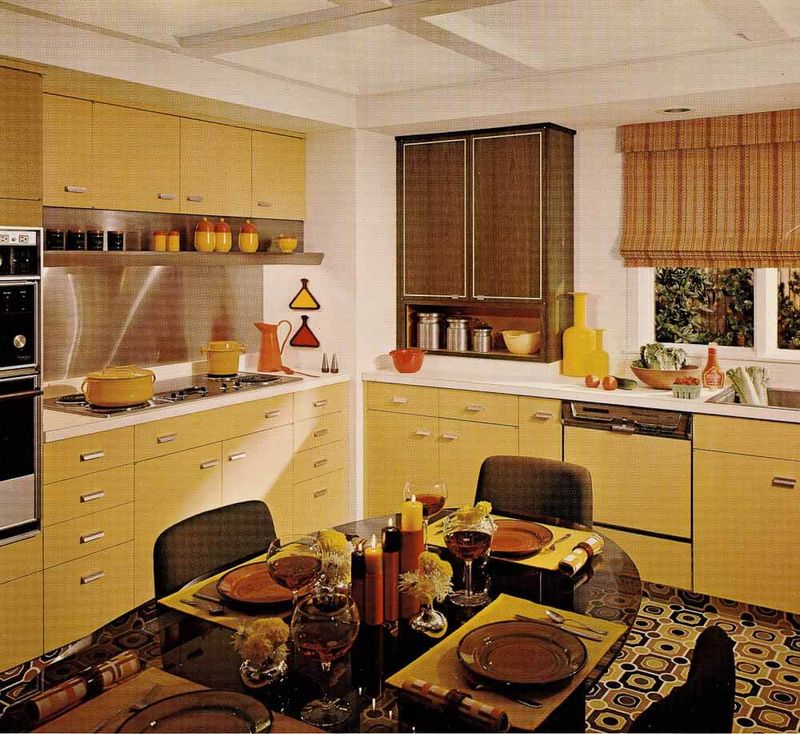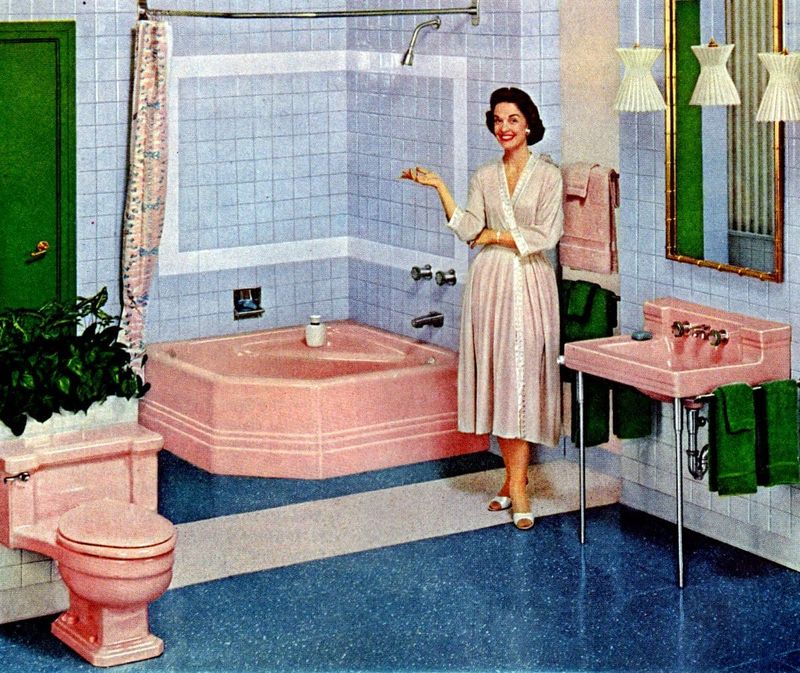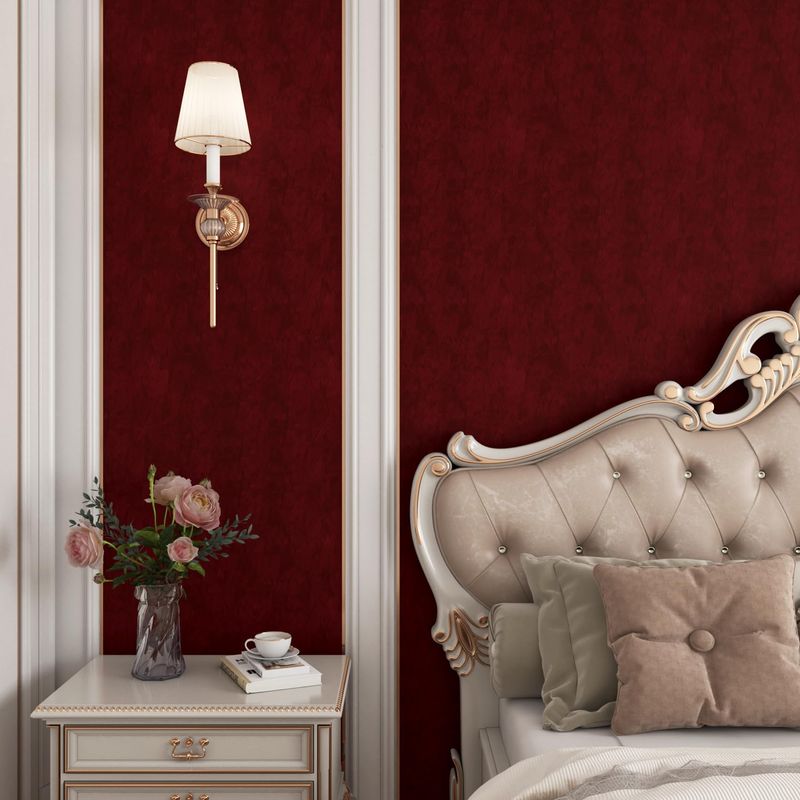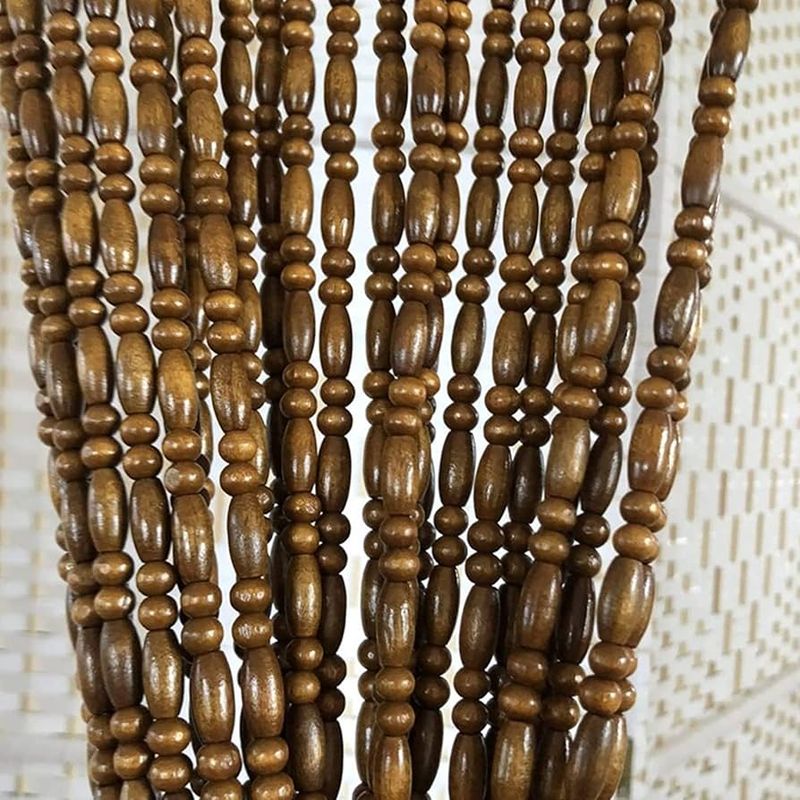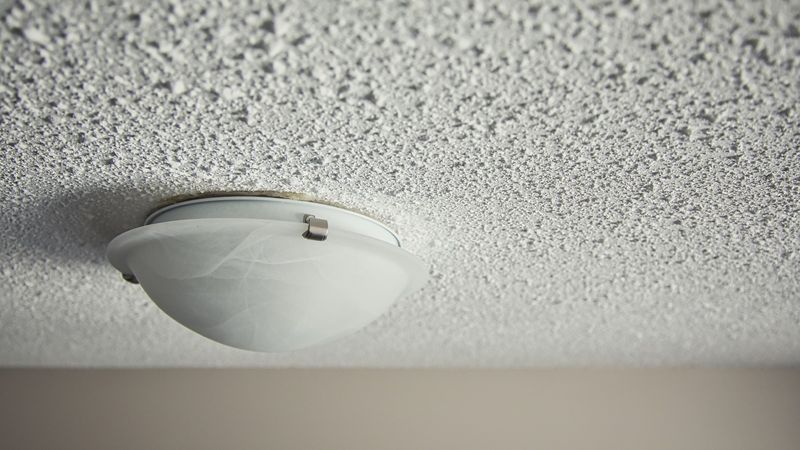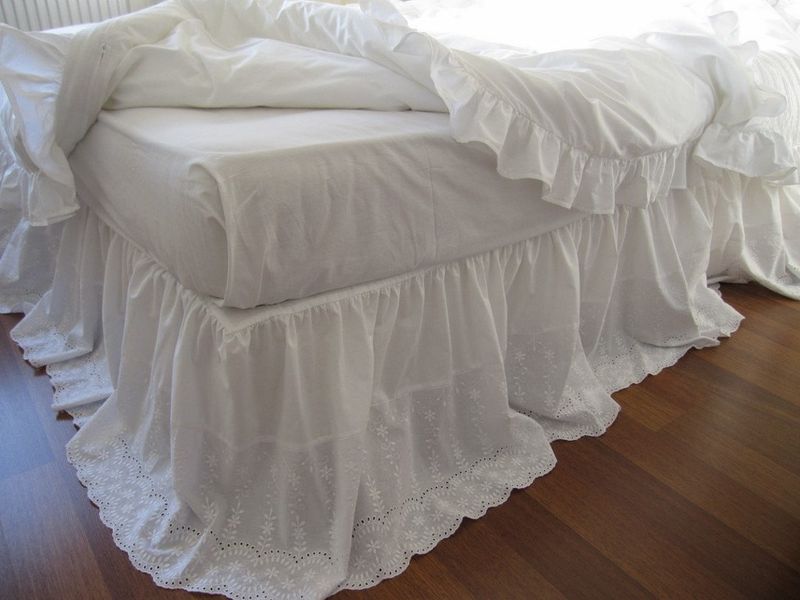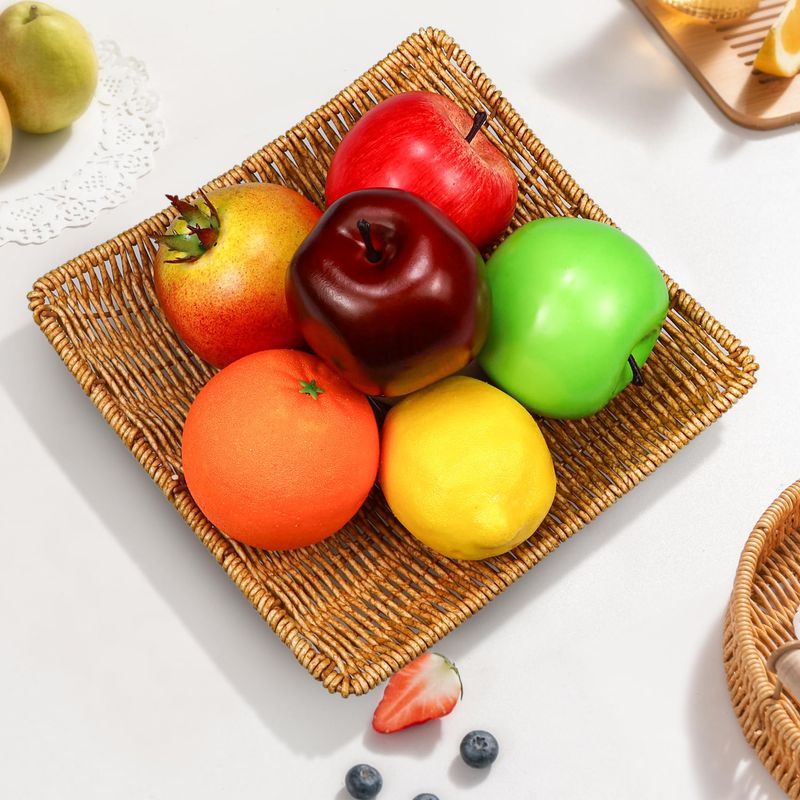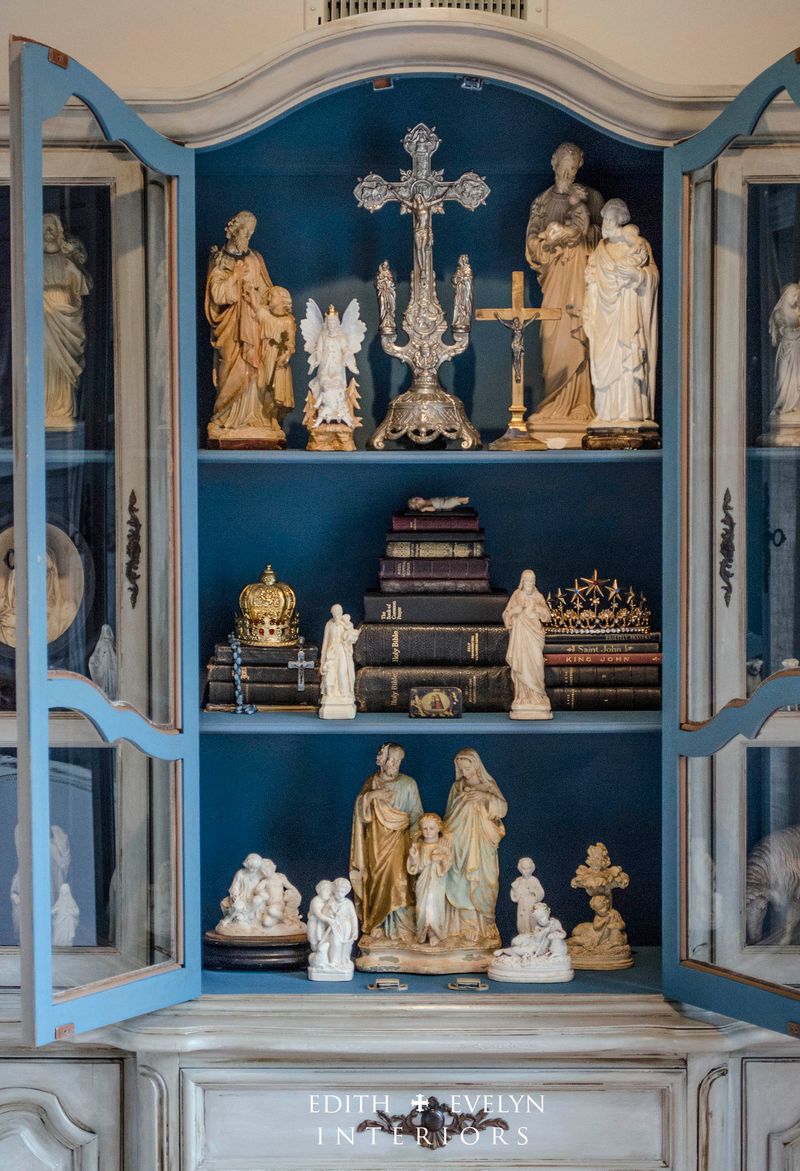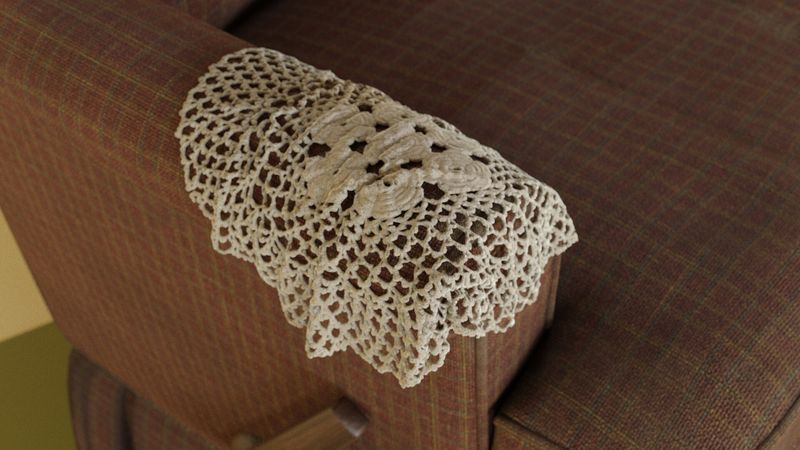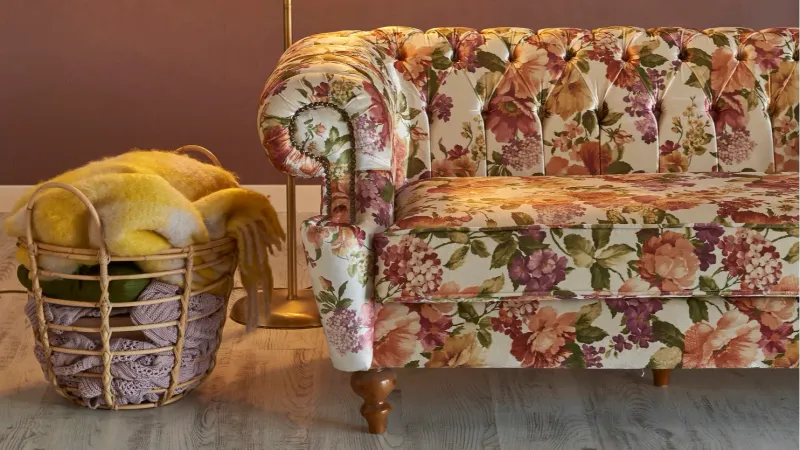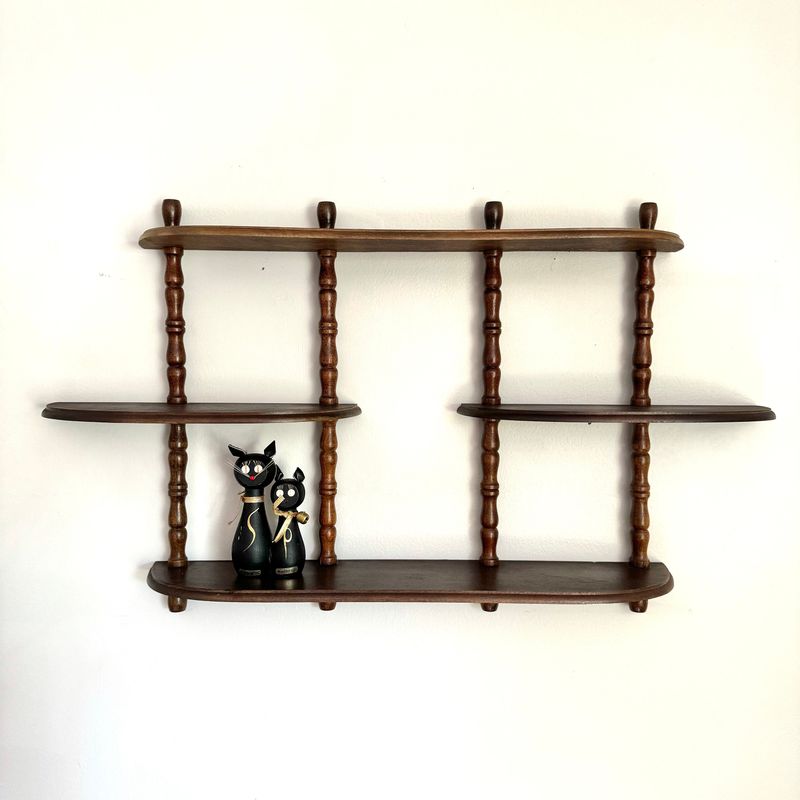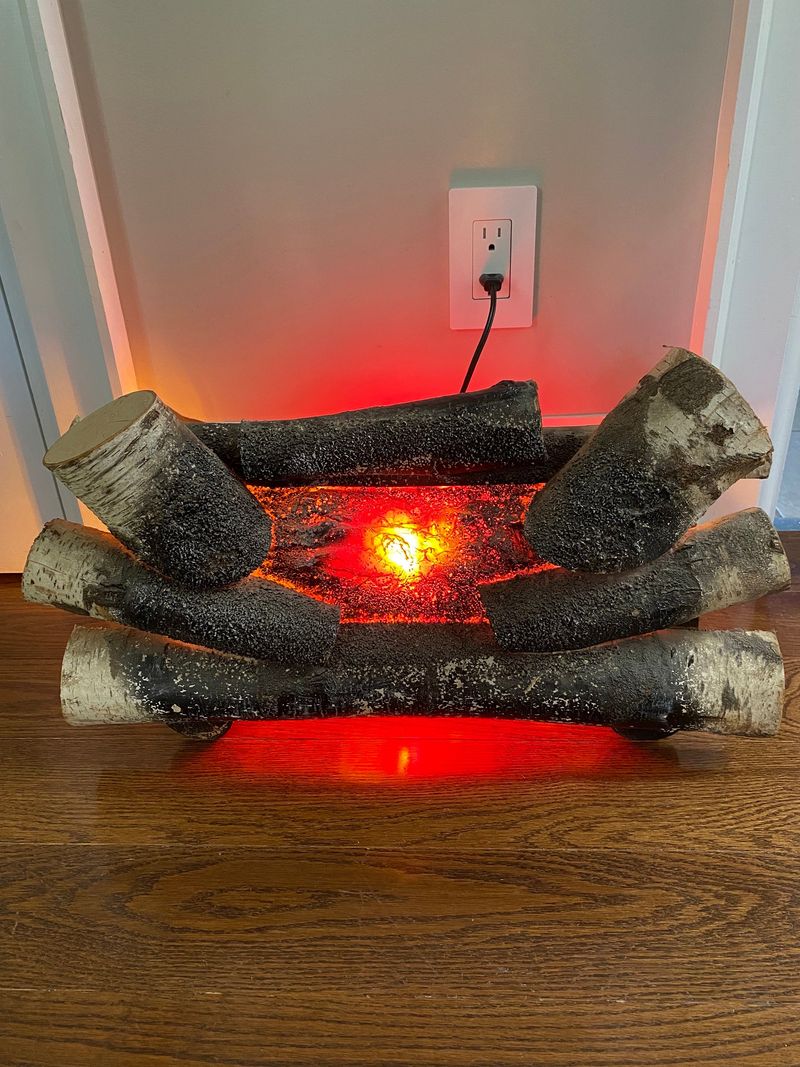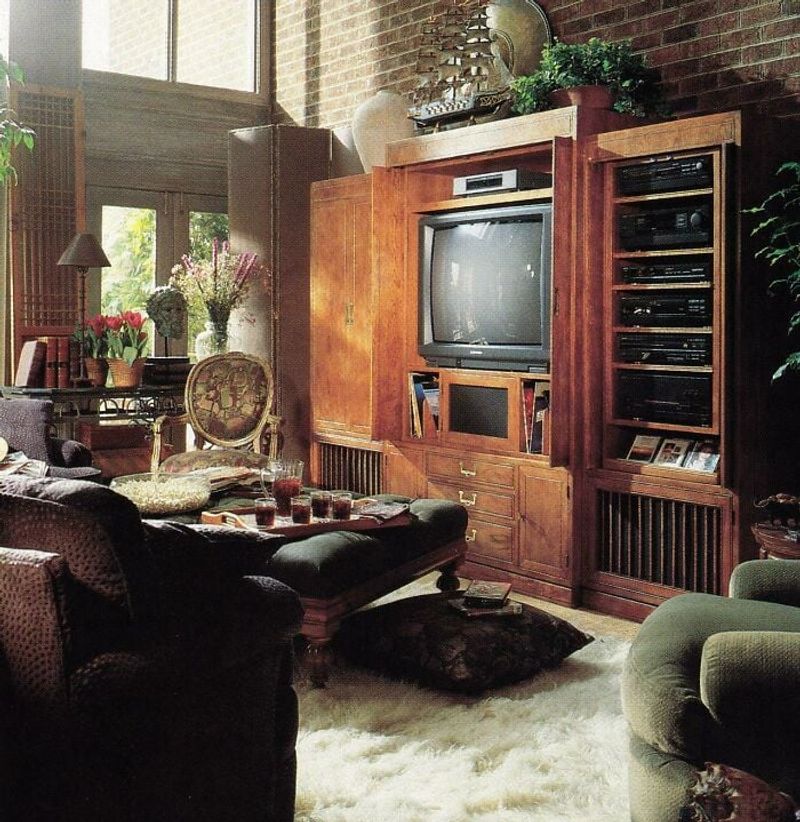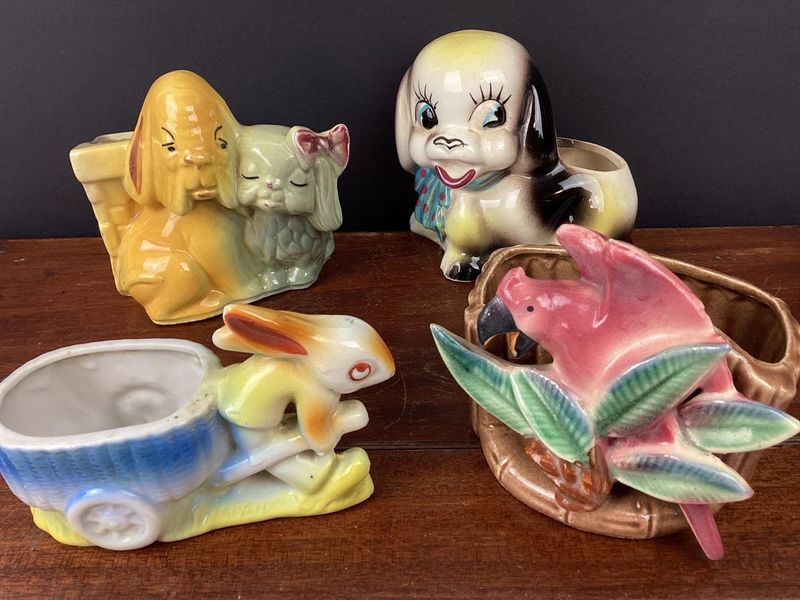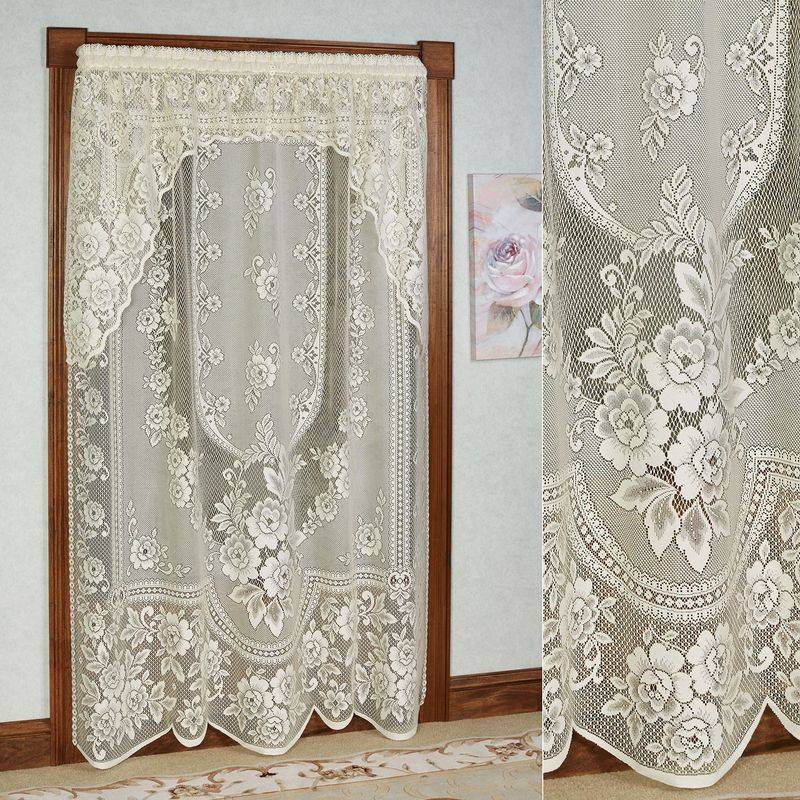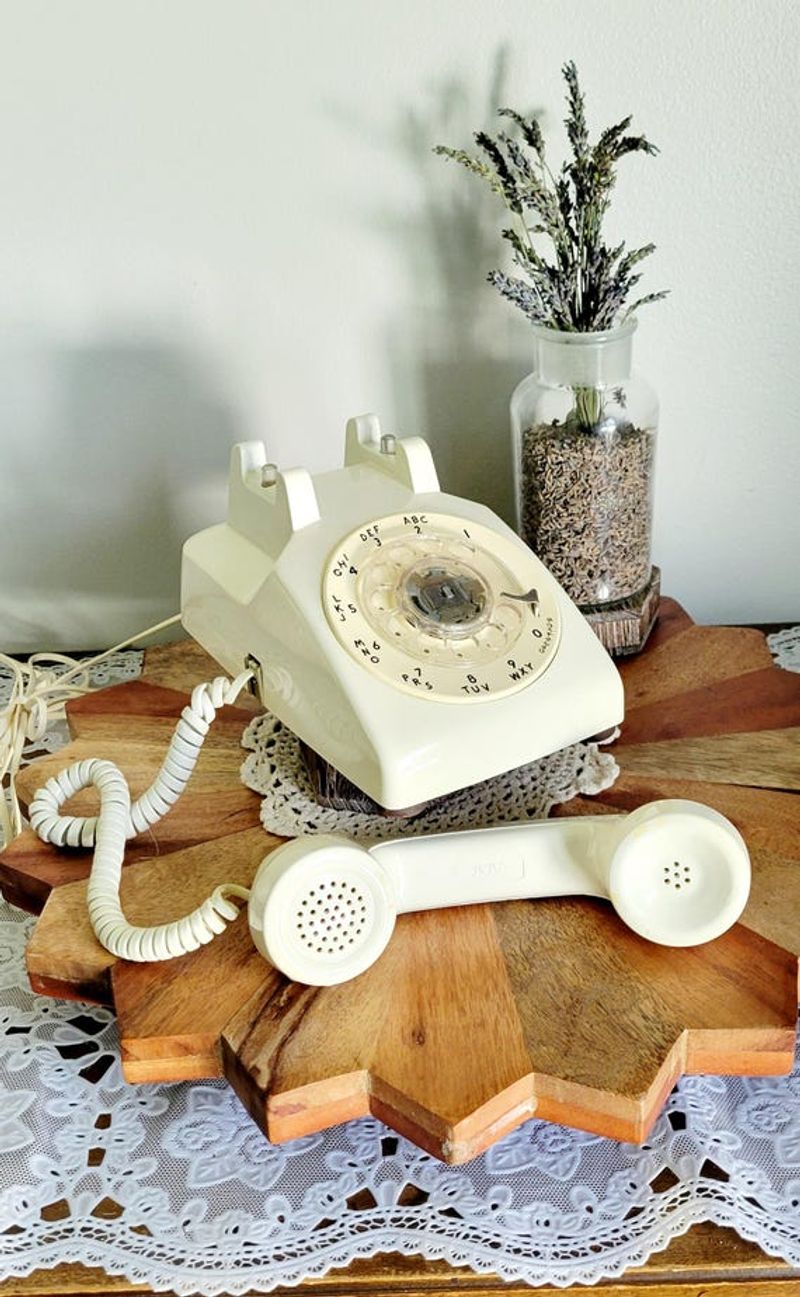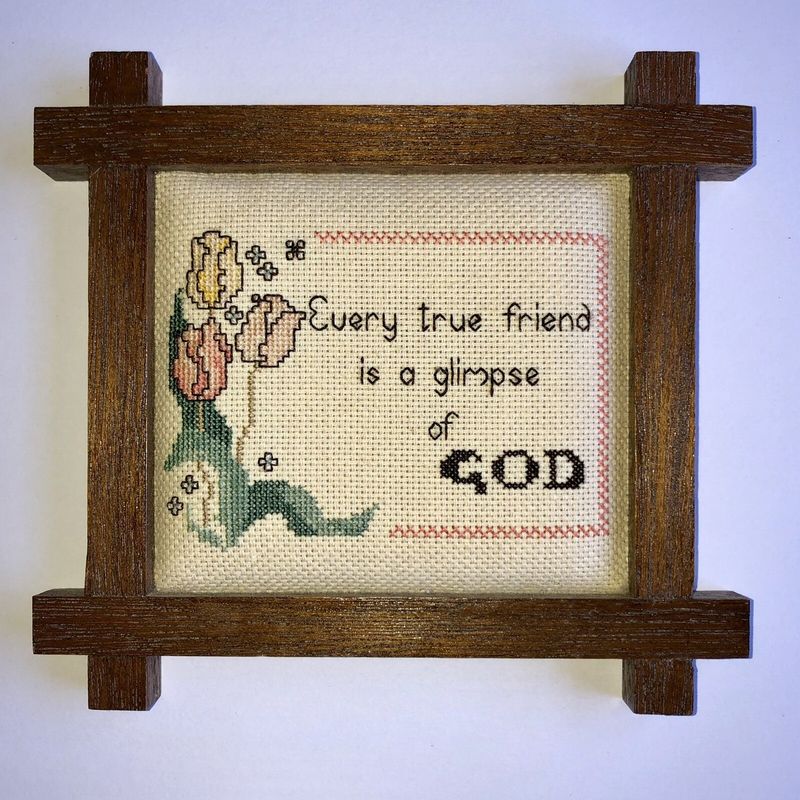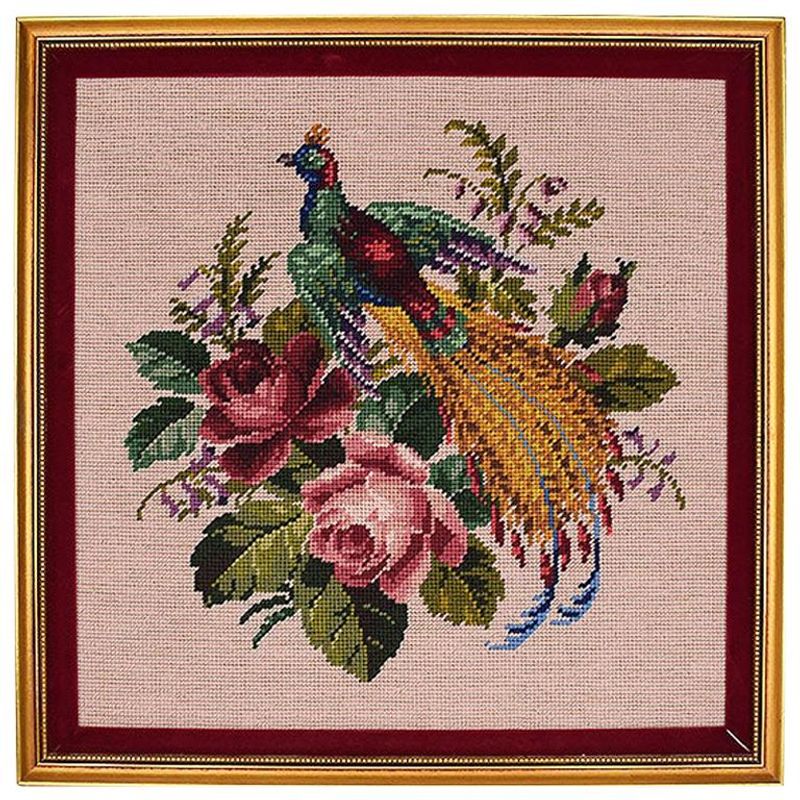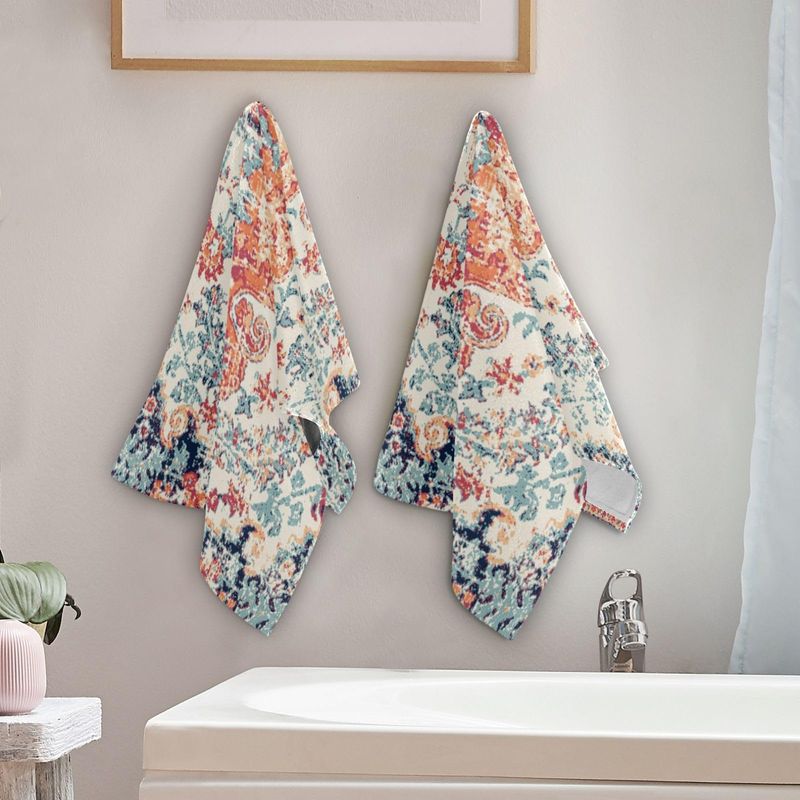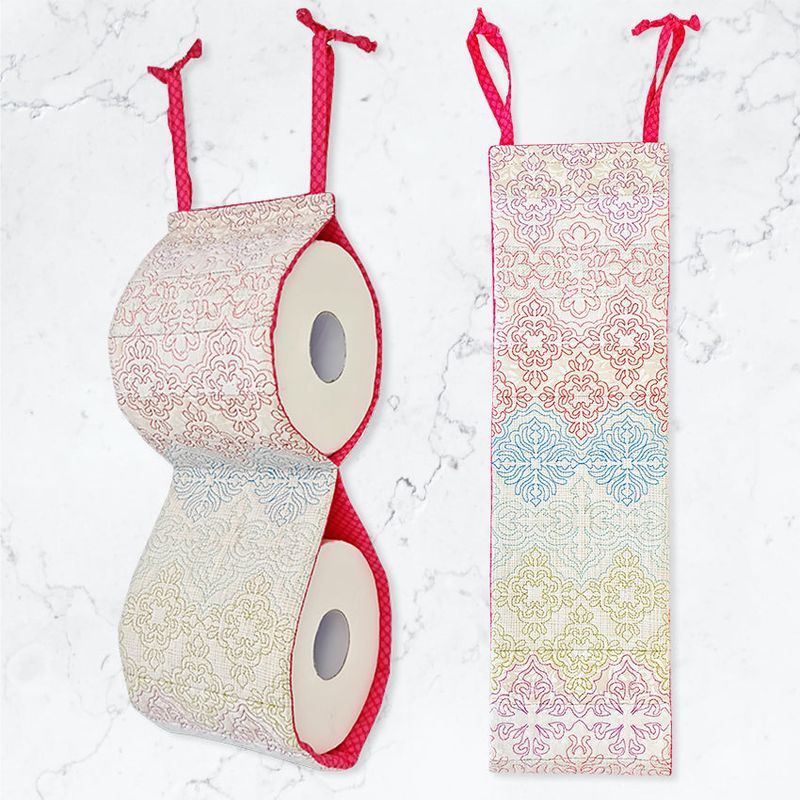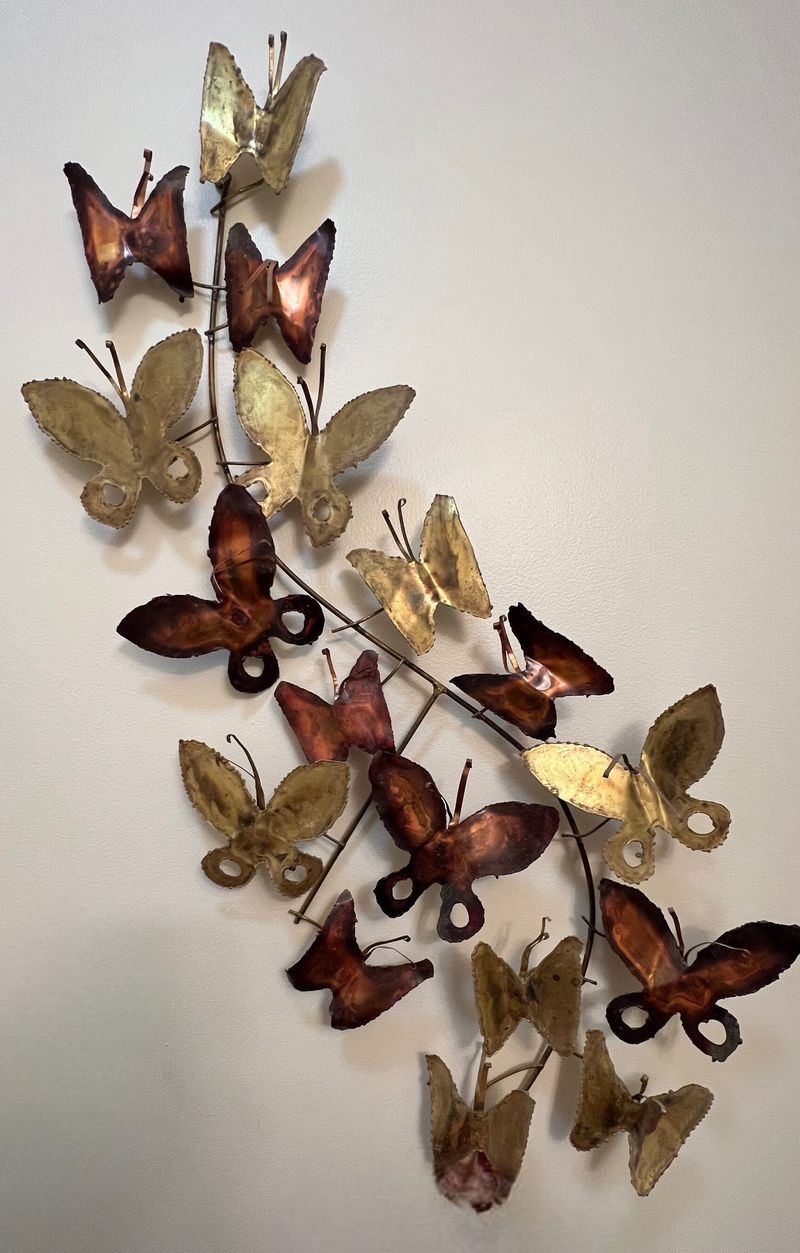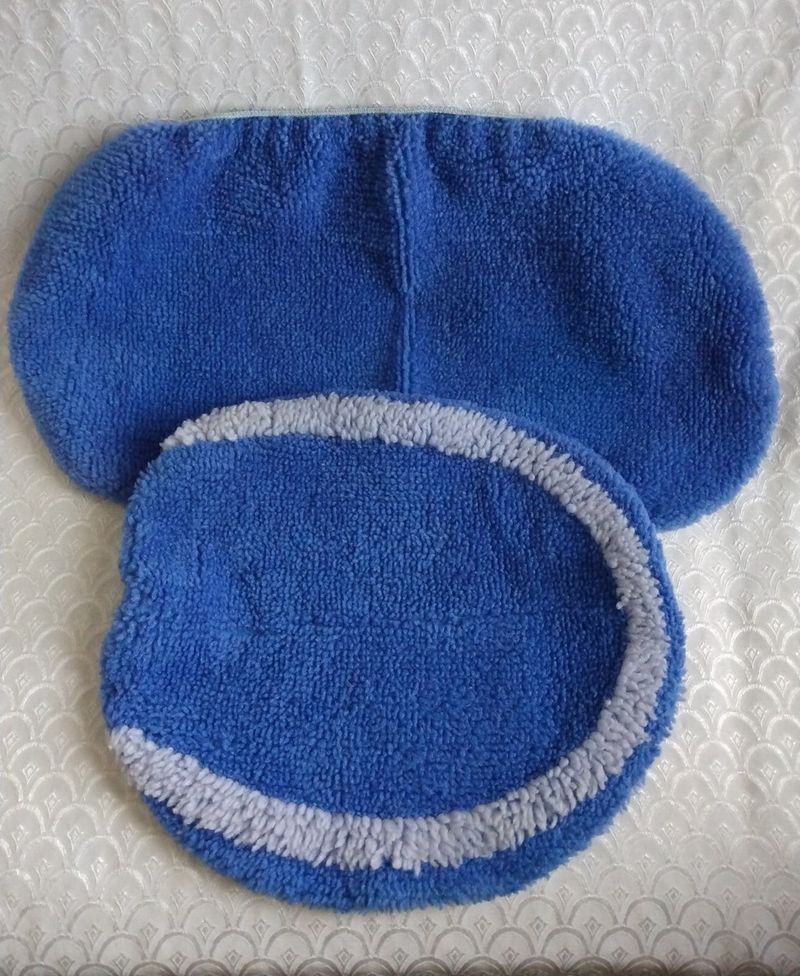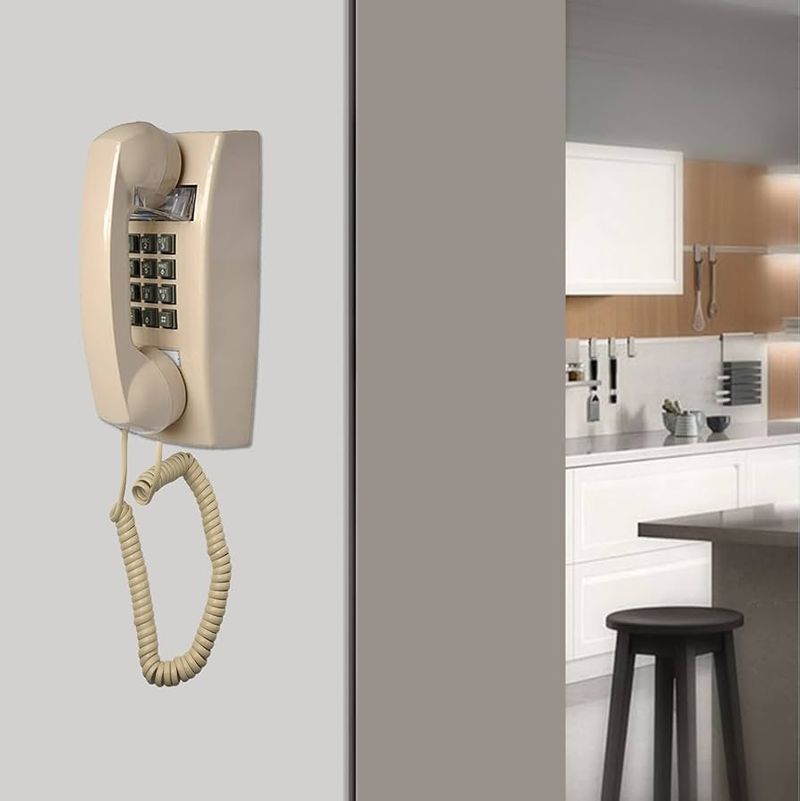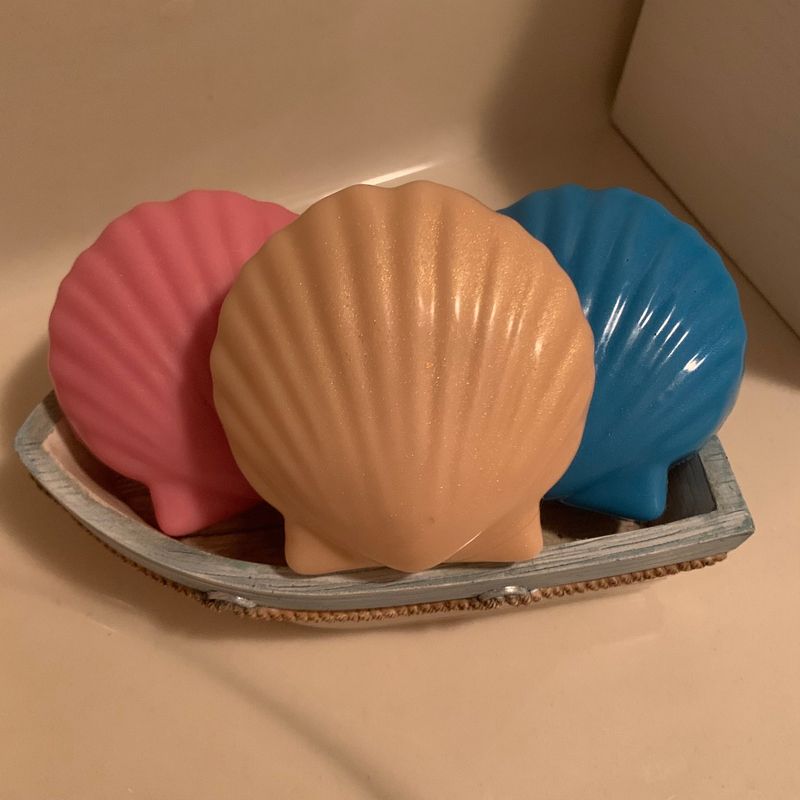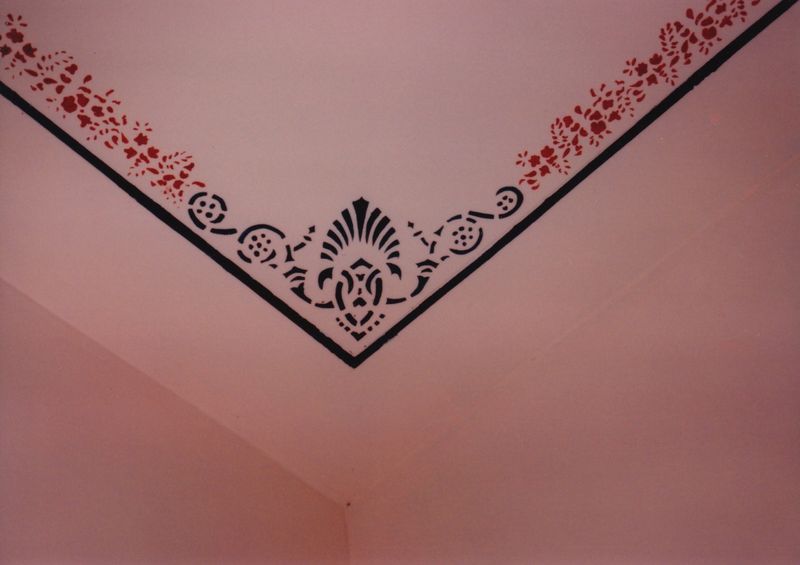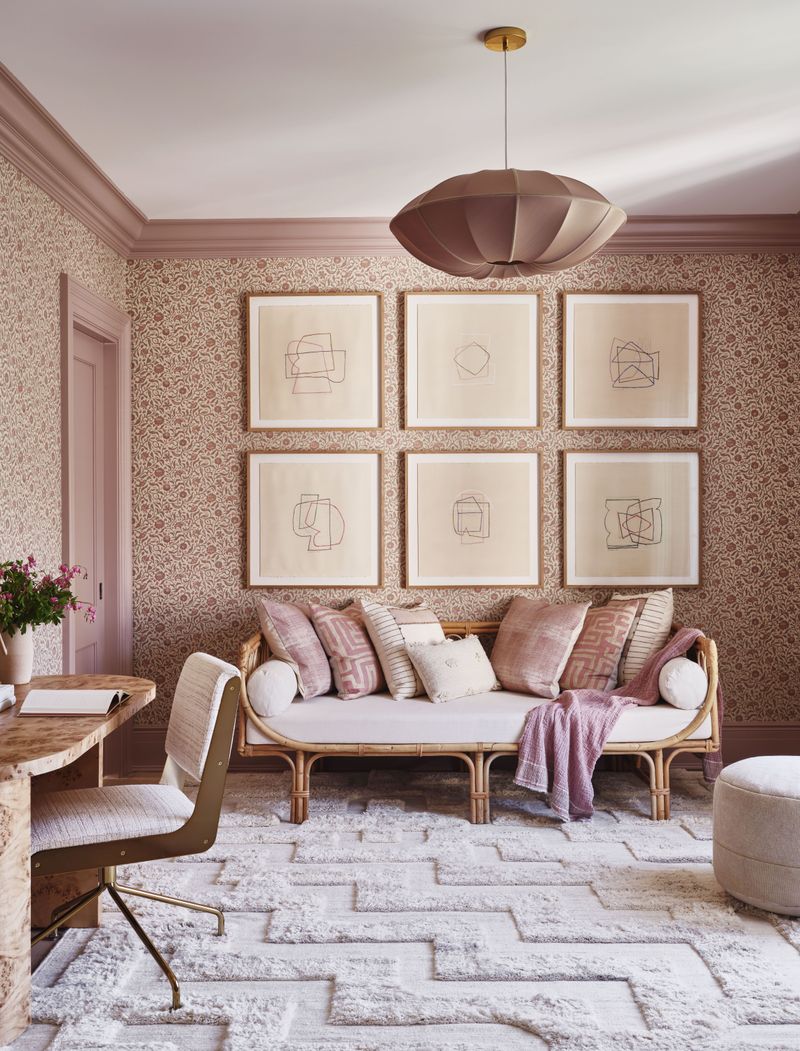Step into a time capsule with these 45 home trends that once graced every grandma’s living room, kitchen, and beyond.
From crocheted wonders to bold color schemes, these styles were all the rage in decades past.
However, as we move towards a more modern aesthetic, it’s time to bid farewell to these nostalgic relics. Join us as we explore the quirky and charming trends that are now totally out of fashion.
1. Plastic-Covered Furniture
Remember visiting grandma’s house and being told not to sit on the plastic-covered couch? This trend was all about preservation, keeping the ‘nice’ furniture pristine for as long as possible. The shiny plastic was a curious choice that made every seat squeak and stick in warmer weather. Today, comfort and authenticity take precedence, and the idea of plastic-encased furniture feels as distant as rotary phones.
2. Doilies Everywhere
Lace doilies were the pride of many grandmas, gracing every tabletop and surface, sometimes even lampshades. These intricate hand-crafted pieces added a touch of elegance—or clutter, depending on your view. Once a symbol of sophistication, doilies have fallen out of favor in modern homes. Their delicate artistry, while impressive, doesn’t align with today’s minimalist decor trends, which favor simplicity over elaborate embellishments.
3. Ruffled Toilet Seat Covers
Ruffled toilet seat covers, often in pastel shades, transformed the bathroom into a frilly affair. Matching rugs and lid covers created a coordinated look that was once considered chic. Their decorative purpose overshadowed practicality, as cleaning became a tedious task. Modern design leans towards sleek and easy-to-maintain fixtures. Ruffles and frills have gracefully exited the stage, making way for clean lines and minimalistic aesthetics.
4. Wall-to-Wall Shag Carpet
Shag carpets, in vivid hues like mustard and avocado, defined the 70s. Their long fibers felt plush underfoot but trapped dirt and allergens, making them a cleaning nightmare. Despite their cozy appeal, the aesthetic doesn’t suit today’s preferences for hardwood or low-pile carpets. The once-popular shag, with its distinctive texture, is remembered fondly but has no place in the polished, streamlined interiors we favor now.
5. Crocheted Tissue Box Covers
Handcrafted with love, crocheted tissue box covers turned ordinary tissue boxes into art pieces. Each cover displayed detailed patterns, often matching the room’s decorative theme. Despite their charm and the skill required to make them, these covers are not practical. Today’s interiors prefer hidden or sleek tissue box designs that complement the overall decor. The crochet cover, once a staple, now serves as a quaint reminder of bygone days.
6. Floral Wallpaper (in every room)
Floral wallpaper, once a favorite in homes everywhere, filled rooms with patterns that were as bold as they were busy. Each room became a garden, with blooms climbing walls in vibrant colors. While charming in its heyday, this trend can overwhelm modern spaces seeking tranquility and balance. Today, subtlety reigns, with wallpapers opting for muted tones or minimalist designs that enhance rather than dominate a room’s aesthetic.
7. Avocado Green Everything
Avocado green was more than a color; it was an identity that kitchens embraced wholeheartedly. From appliances to tiles, this hue was ubiquitous. Its earthy tone, though trendy then, feels dated today. Contemporary kitchens favor neutral palettes and sleek finishes over the bold statements of yesteryears. The avocado era, with its distinctive charm, has ceded to more versatile and timeless shades that harmonize effortlessly with modern designs.
8. Harvest Gold Kitchens
Harvest gold, a warm and inviting hue, once dominated kitchens. Appliances, cabinets, and decor elements basked in this golden glow. While it provided a cozy atmosphere, it now feels like a relic of the past. Modern design trends lean towards stainless steel and neutral tones, which offer a fresh and timeless appeal. The harvest gold kitchen, with its nostalgic warmth, is fondly remembered but has stepped aside for more understated elegance.
9. Matching Bathroom Sets
Coordinated bathroom sets, from shower curtains to soap dishes, created a unified look that was once the height of sophistication. Often in pastel or themed designs, these sets turned functional spaces into style statements. However, the emphasis on uniformity has waned. Today’s bathrooms embrace eclectic mixes of textures and colors, prioritizing individuality and comfort over strict matching. The era of the matchy-matchy bathroom quietly fades away.
10. Velvet Artwork or Wallpaper
Velvet walls introduced an unexpected tactile element to interiors, making rooms feel both luxurious and intimate. The texture begged to be touched, offering a sensory experience that wallpaper alone could not provide. Yet, the maintenance and visual heaviness make it an impractical choice today. Modern spaces prefer lighter, airier designs that evoke warmth without overwhelming. The velvet trend remains a plush memory of a time embracing opulence at every turn.
11. Beaded Doorways
Beaded curtains, with their clattering charm, turned doorways into playful partitions. Each strand seemed to tell a story, swaying with every breeze. This bohemian touch once added a free-spirited vibe to homes, but their tendency to tangle and obstruct has led to their decline. Today, open spaces and fluidity are preferred, leaving beaded doorways as a nostalgic echo of a time when every entrance danced to its own rhythm.
12. Wood Paneling
Dark wood paneling once lent homes a rustic, cabin-like ambiance. It was a favorite for dens, basements, and cozy retreats. However, its somber tones and overwhelming presence don’t align with today’s airy and bright decor trends. Homeowners now opt for painted walls or lighter wood finishes that enhance space and light. The era of wood paneling, with its comforting warmth, has transitioned to a more modern, open style.
13. Popcorn Ceilings
Popcorn ceilings, with their distinctive texture, were the go-to for hiding imperfections. They added an element of interest to otherwise plain ceilings. However, their rough surface made cleaning a challenge and a potential source of allergens. As smooth, sleek ceilings became the norm, the popcorn texture was gradually phased out. Modern homes favor flat, unobtrusive ceilings that allow other design elements to shine, making popcorn a bygone trend.
14. Ruffled Bed Skirts
Ruffled bed skirts added a touch of romance and femininity to bedrooms, with layers cascading softly to the floor. These skirts provided a decorative cover for bed frames and storage underneath. However, as preferences shifted towards minimalism and practicality, the ruffles were deemed excessive. Today’s bedrooms favor streamlined looks, where simplicity and functionality prevail. The ruffled skirt, while charming, remains a sweet reminder of more ornate times.
15. Faux Fruit Bowls
Once a staple on dining tables, faux fruit bowls provided a perennially ripe display. These wax and plastic creations mimicked nature’s bounty, adding color and charm to homes. While they never spoiled, their artificial nature eventually lost favor. Modern decor trends emphasize authenticity and fresh elements. The faux fruit bowl, with its vibrant yet static appeal, has been replaced by real fruits or other centerpiece displays that celebrate natural beauty.
16. China Cabinets Full of Figurines
China cabinets, once a focal point in dining rooms, showcased collections of figurines and collectibles. Each piece had its story, often passed down through generations. However, the shift towards minimalism and open spaces has led to their decline. Today’s interiors favor versatile storage solutions and less clutter. The cabinet, while a treasure trove of memories, now stands as a symbol of a bygone era where display meant everything.
17. Heavy Drapes and Valances
Heavy drapes and valances were once synonymous with luxury. Their layered fabrics and rich textures framed windows with grandeur. Designed to insulate and impress, they often darkened rooms and required meticulous upkeep. Modern design embraces light, airy window treatments that highlight natural light and ease of maintenance. The heavy drapery, with its opulent charm, has gracefully stepped aside for sheer and minimalist alternatives that complement contemporary spaces.
18. Recliners with Lace Headrest Covers
Transcending mere functionality, recliners adorned with lace headrest covers became a staple in many living rooms. These covers added a touch of elegance while protecting upholstery from wear. However, the lace often felt more decorative than practical. As furniture designs have evolved, the emphasis on comfort and sleek aesthetics has taken precedence. Today’s recliners, without lace embellishments, focus on innovative materials and forms that blend seamlessly into modern homes.
19. Faux Floral Arrangements
Silk flowers offered homes the beauty of blooms without the need for care. These faux arrangements graced tables, mantels, and entryways, providing a burst of color that never faded. While they mimicked nature, their static appearance eventually fell out of favor. Contemporary decor leans towards fresh flowers or greenery that infuses spaces with life and movement. The silk arrangement, though charming, now stands as a quaint nod to low-maintenance elegance.
20. Clashing Pattern Upholstery
Floral-on-floral or stripes-on-plaid—clashing patterns were once a bold interior statement. This mix-and-match approach added visual interest but could easily overwhelm a space. The boldness of clashing patterns was a signature of an era unafraid to embrace daring aesthetics. Today’s interiors, however, strive for harmony and balance, choosing patterns and colors that complement rather than compete. The clash of patterns, while iconic, has softened into more cohesive decor schemes.
21. Tchotchkes Galore
A shelf filled with tchotchkes told stories of travels, milestones, and memories. These small collectibles, often gifts or souvenirs, turned homes into personal museums. While charming, the abundance of items often led to clutter and dust. Modern decor prefers curated displays or fewer, meaningful pieces that allow space to breathe. The era of tchotchke overload, with its sentimental charm, has evolved into a desire for clarity and openness in living spaces.
22. Fake Fireplaces with Electric Logs
Fake fireplaces offered the illusion of a cozy hearth without the mess of real logs. Electric logs flickered with a faux flame that brought warmth, if not heat. While they added ambiance, the lack of authenticity led to their decline. Modern homes seek genuine experiences, opting for real fireplaces or sleek electric models that provide both warmth and style. The fake fireplace, a charming relic, now flickers only in memory.
23. Oversized Entertainment Centers
Oversized entertainment centers dominated living rooms, designed to house tube TVs and a collection of media. Their bulk and storage made them practical in an era before flat screens. However, the advent of wall-mounted TVs and streaming services rendered these giants obsolete. Today, sleek consoles and minimalist designs take their place, providing function without overshadowing the room. The massive entertainment center, a staple of the past, has gracefully bowed out.
24. Ceramic Animal Planters
Ceramic animal planters brought whimsy to gardens and windowsills. Ducks, bunnies, and cows cradled plants, adding a playful touch to decor. While adorable, their cutesy nature feels a bit dated in today’s sleek and refined spaces. Contemporary planters favor simple, geometric designs that complement rather than distract. The animal planter, with its endearing charm, remains a nostalgic nod to a time when decor embraced the fanciful and fun.
25. Lace Curtains
Lace curtains gently filtered light, adding a touch of nostalgia to windows. Their delicate patterns created an air of romance, reminiscent of cottage gardens and simpler times. However, their lack of privacy and tendency to collect dust led to their decline. Modern interiors prefer functional, streamlined window treatments that offer both style and practicality. The lace curtain, while lovely, now flutters in the gentle breeze of memory and tradition.
26. Rotary Phones as Decor
Once essential for communication, rotary phones are now relics of the past. Though still plugged in at some homes “just in case,” they primarily serve as nostalgic decor. Their iconic design and tactile dialing evoke a simpler era. In today’s world of sleek smartphones, the rotary phone, with its charming antiquity, stands as a whimsical tribute to an analog age where patience was part of every call.
27. Framed Cross-Stitch Quotes
Cross-stitch quotes, often lovingly framed, decorated walls with messages of warmth and welcome. “Home Sweet Home” was a common motif, stitched with care and pride. While they added a personal touch, the style feels dated in contemporary spaces seeking clean lines and modern art. Today’s decor leans towards abstract art and typography that offers a fresh perspective. The cross-stitch, a labor of love, remains a heartfelt reminder of handcrafted elegance.
28. Needlepoint Wall Art
Needlepoint art, with its meticulous stitching, was displayed proudly like fine paintings. Each piece, painstakingly crafted, reflected patience and dedication. Despite its artistic value, the style has waned as modern tastes shift towards less labor-intensive decor. Contemporary walls favor art that speaks to current themes and aesthetics. The needlepoint, while an impressive showcase of skill, now whispers of an era where time-honored crafts reigned supreme.
29. Carpeted Bathrooms
Carpeted bathrooms seemed like a cozy idea, providing warmth underfoot in a space usually dominated by cold tiles. However, moisture issues and hygiene concerns quickly overshadowed any comfort they offered. Modern bathrooms now favor tiles, which are easier to clean and maintain. The carpeted bathroom, while a curious experiment in comfort, has gracefully receded, making way for practical and stylish solutions that align with contemporary sensibilities.
30. Decorative Towels You Can’t Use
Decorative towels hung pristinely, signaling to all that they were off-limits. Their purpose was purely aesthetic, adding a touch of color and theme to the bathroom. While beautiful, the notion of towels you can’t use feels impractical today. Contemporary bathrooms embrace functionality, blending style with everyday utility. The decorative towel, while a quaint concept, serves as a reminder of a time when form sometimes trumped function.
31. Quilted Toilet Paper Holders
Quilted toilet paper holders, with their fabric charm, turned spare rolls into decor pieces. These covers often matched bathroom themes, adding a soft touch to utility. However, their decorative nature often overshadowed practicality, as modern design trends lean towards sleek, unobtrusive solutions. Today, tissue holders are integrated into the decor seamlessly, leaving the quilted covers as a nostalgic nod to a time of creative bathroom embellishment.
32. Rooster-Themed Kitchens
Rooster-themed kitchens brought a touch of farmhouse whimsy, with ceramic chickens perched on counters and rooster patterns on dishware. This rural motif added character but can feel kitschy in today’s sleek kitchen landscapes. Modern design embraces subtle thematic elements or clean, uncluttered spaces. The rooster kitchen, with its country charm, remains as a playful nod to a time when decor crowed proudly with personality.
33. Plastic Slipcovers on Lampshades
Plastic slipcovers protected lampshades from dust and wear, preserving their pristine condition. While practical, the plastic detracted from the lamp’s aesthetic, reflecting glare and dimming ambiance. Modern sensibilities favor open shades that enhance light and decor synergy. The plastic-covered lampshade, while a clever solution, now symbolizes a bygone era where preservation sometimes overshadowed presentation.
34. Wallpaper Borders
Wallpaper borders, with their floral or country themes, added a decorative edge to rooms. This finishing touch turned plain walls into styled statements. However, the trend’s visual fragmentation doesn’t align with today’s seamless designs that prioritize cohesion and fluidity. Modern interiors prefer continuous color schemes or statement walls without borders. The wallpaper border, while a quaint detail, remains a nostalgic reminder of personalized decor flair.
35. Room Dividers with Fabric Panels
Fabric-panel room dividers offered a flexible solution for separating spaces while adding a decorative element. Often ornate, these dividers aimed for elegance but sometimes resulted in visual clutter. As open-concept living gained popularity, the need for such partitions declined. Modern homes favor fluid spaces that allow for easy interaction and movement. The fabric divider, while once a stylish solution, now stands as a charming relic of times past.
36. Clocks with Roman Numerals (wrongly spaced)
Clocks featuring Roman numerals added a touch of old-world charm to homes. However, the incorrect spacing of numerals often led to confusion rather than elegance. While the design was a nod to tradition, practicality won out. Contemporary clocks favor clarity and accuracy, with designs that blend seamlessly into modern interiors. The Roman numeral clock, with its quirky imperfections, remains a whimsical reminder of decorative ambition over functionality.
37. Butterfly Wall Plaques
Butterfly wall plaques flitted across walls, adding a touch of whimsy to interiors. Often metallic or 3D, these plaques transformed plain surfaces into lively displays. While they brought nature indoors, the trend feels simplistic in today’s complex design landscapes. Modern decor emphasizes sophisticated wall art that complements overall aesthetics. The butterfly plaque, with its charming flutter, remains a nostalgic nod to a time when decor took flight with imagination.
38. Fringed Lampshades
Fringed lampshades, reminiscent of 1940s speakeasies, added an element of theatrical elegance to rooms. The fringe danced with every breeze, casting playful shadows. While they evoked glamour, their upkeep and tendency to collect dust made them impractical. Modern lighting favors clean lines and functionality, providing illumination without distraction. The fringed lampshade, with its flirty allure, now sways only in the memory of vintage-inspired decor.
39. Sunburst Mirrors (Gone Wrong)
Sunburst mirrors, inspired by mid-century design, aimed to bring artistic flair to walls. However, budget versions often fell short, with uneven spokes and flimsy construction. While the original design retains its iconic status, these missteps led to a decline in popularity. Modern homes prefer quality over imitation, favoring mirrors that reflect both style and substance. The sunburst mirror, in its less flattering form, remains a reminder of design ambition gone awry.
40. Bathroom Carpet Covers for the Toilet Lid
Carpet covers for toilet lids added a touch of texture and color to bathrooms, completing a coordinated look. However, the impracticality of carpet in moisture-prone areas led to their decline. Modern bathrooms favor easy-to-clean materials that maintain hygiene and style. The carpeted toilet lid, while a creative attempt at decor cohesion, has given way to sleek designs that prioritize function and form in equal measure.
41. Wall-Mounted Corded Phones in the Kitchen
Wall-mounted corded phones were a kitchen staple, offering communication convenience while tethering users to one spot. Often in avocado or beige, they reflected the color trends of their time. While nostalgically charming, the advent of cordless and mobile technology rendered them obsolete. Today, kitchens are communication hubs without physical ties. The corded kitchen phone, with its iconic spiral cord, remains a tangible link to an era where patience and presence were essentials.
42. Cabbage Patch or Porcelain Dolls on Display
Cabbage Patch and porcelain dolls, with their wide eyes and intricate details, graced many a grandma’s shelf. These dolls were more than toys; they were collectibles, often passed down through generations. However, their fixed gazes and elaborate outfits feel out of sync with today’s streamlined decor. Modern homes prefer versatile accessories that reflect current tastes. The doll collection, while endearing, now stands as a testament to the sentimental value of cherished objects.
43. Shell-Shaped Soaps in Guest Bathrooms
Shell-shaped soaps, displayed in guest bathrooms, were a decorative touch that guests admired but rarely used. Their intricate shapes and pastel colors added a coastal charm, yet practicality was often sidelined. Modern bathrooms prioritize functionality and ease of use, with items that seamlessly blend beauty and utility. The shell soap, a delicate ornament, now serves as a nod to a time when decorative details were cherished over everyday practicality.
44. Stenciled Borders Around the Ceiling
Stenciled borders, often featuring hearts or vines, added a decorative touch to ceilings. These accents turned plain rooms into personalized spaces, reflecting the homeowner’s style. However, the visual fragmentation they introduced doesn’t suit today’s preference for cohesive design. Modern interiors favor seamless transitions and open spaces. The stenciled border, while once a charming addition, remains a whimsical reminder of creativity and personalization in home decor.
45. Everything in Mauve and Dusty Rose
Mauve and dusty rose, with their muted pink hues, once defined an era of style. Entire rooms were drenched in these colors, from walls to upholstery. While soft and romantic, they feel overly specific in today’s diverse color palettes. Modern design embraces a wider spectrum, allowing for personalization and innovation. The mauve and dusty rose phase, with its gentle charm, is fondly remembered but has gracefully given way to more dynamic and refreshing color choices.
